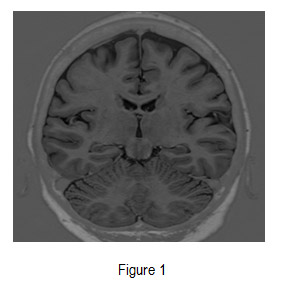- About ACNS
- Meetings
- Education
- Practice
- Research
- Advocacy
- Membership
A 15 year old girl was born the 2nd of 3 children with a normal birth, maternal labor, delivery and development. Ear infections were recurrent as a child. At 1 year of age she experienced a convulsion during a fever of 102.70F. Her sister and a cousin had seizures too with sudden stiffening, loss of consciousness, and rhythmic body jerking during fevers. At the hospital she was diagnosed with a febrile seizure (FS). A CT of the brain and spinal tap were normal. Later an EEG was normal. She experienced recurrent FS during fevers with her ear infections. She was given a prescription for prolonged seizures in case of a prolonged seizure. She was begun on carbamazepine when she developed convulsions that occurred without fever at 7 years old. With treatment a 2nd type of seizure became noted characterized by single body jerks that would lead to “head nods”. A pediatric epileptologist was consulted after a focal seizure. Brain MRI was normal (see figure 1) and EEG (figure 2) had a normal background with generalized spike-and polyspike-and-waves. AED change to valproate led to seizure control.


Figure: (1) Normal coronal brain MRI and (2) EEG demonstrating a single generalized polyspike-and-wave in second 2 and generalized spike-and-waves in second 7.
A diagnostic test was performed.
Answer:
The diagnosis of GEF+ (type 7) was made after a blood test demonstrated a mutation of the SCN9A gene linked to chromosome 2q.
EEG and Pharmacogenomics
Classification systems use terminology and concepts of seizure onset to organize knowledge of the types of epilepsy. Definitions to distinguish focal and generalized seizures have been recently revised without utilizing EEG1. In this case, “pseudo-resistance” to carbamazepine occurred from misclassification of the epilepsy as localization-related. The treatment course was complicated when seizures were not controlled due to the sodium channel-blocking mechanism that is operational with carbamazepine (Tegretol®). Generalized (genetic) epilepsy syndromes such as GEF+ (type 7) may not respond to narrow-spectrum AEDs used to treat focal seizures and even provoke new types of seizures (myoclonic jerks) as in this case. AED substitution with valproate as a mixed function Gaba-ergic drug lead to complete control of all seizures stressing the importance of EEG and genetics in diagnosis and treatment as noted in our patient with GEF+ and a mutation of the sodium ion channel2.